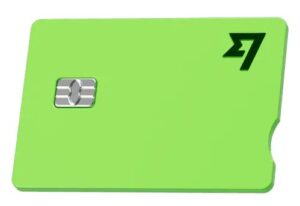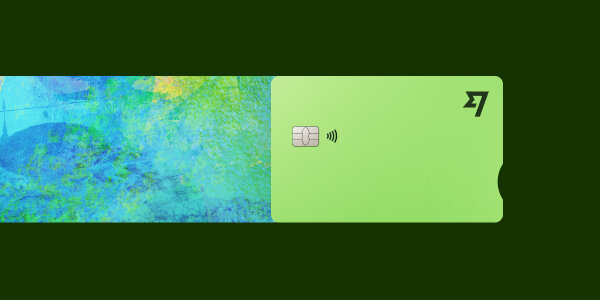Chase Card Foreign Transaction Fees & Alternatives for Travel [2025]
Chase offers both credit and debit cards which can be broadly used for international spending. In fact, there are specific travel credit cards like the Chase Sapphire Preferred and the Chase Sapphire Reserve credit cards which offer travel based rewards alongside no foreign transaction fees. However, other fees and charges are likely to apply, which means using your regular Chase card when you’re abroad may not always be the best option.
Read on for all you need to know about using a Chase card for foreign currency spending, including fees, limits and exchange rates. We’ll also provide some alternatives like Wise and Revolut that offer debit card options with low transaction fees and mid-market exchange rate.
| Table of contents |
|---|
First, let’s take a quick look at some frequently asked questions, and then we’ll dive deep:
| FAQs | Answers |
|---|---|
| Can I use my Chase card internationally? | Yes. Chase debit cards and credit cards can be used internationally anywhere the card network is accepted. |
| Do Chase debit cards have foreign transaction fees? | Yes, Chase debit cards have foreign transaction fees, typically around 3%. |
| Do Chase credit cards have foreign transaction fees? | Some Chase credit cards have foreign transaction fees, but others like the Sapphire Preferred and Sapphire Reserve do not. Alternatives like Wise and Revolut offer no foreign transaction fees, making them a great option for frequent travelers. |
| How do I avoid Chase international fees? | To avoid Chase international fees, use cards that waive foreign transaction fees or consider alternatives like Wise and Revolut. |
| Do I need to tell Chase I’m traveling internationally? | No, there’s no need to inform Chase of your travel plans, even when traveling abroad. However it’s always smart to make sure your contact details are up to date so the bank can get in touch if there are any suspicious transactions on your account. |
Quick summary: Chase foreign transaction fees
- Chase imposes foreign transaction fees, which are typically around 3% of the transaction amount and uses Visa or MasterCard exchange rates.
- However, Chase also offers cards with no foreign transaction fees like their Sapphire Preferred and Sapphire Reserve credit cards.
- Alternatives like Wise and Revolut also offer accounts and debit cards with no foreign transaction fees, making them great options for frequent travelers and expats.
- International ATM withdrawals with Chase cards incur additional fees. $5 for debit cards and $10 or 5% for credit card cash advances.
Can I use my Chase card internationally?
Yes. Chase debit cards are usually on the Visa network. Chase credit cards come on both Visa and Mastercard networks. The good news is that both Visa and Mastercard are broadly accepted around the world. All you’ll need to do is look for the network logo on any ATM, or by the checkout in stores you want to spend in.
That said, spending with your normal Chase card when you’re overseas or shopping online in a foreign currency may not be your cheapest option. Depending on the card you have you may find there are extra foreign transaction fees, which push up your overall costs significantly.
This guide walks through all you need to know, and also looks at some smart ways to limit the international fees you’ll pay.
Does Chase charge foreign transaction fees?
Chase, like most other major financial providers, imposes foreign transaction fees, which are typically around 3% of the transaction amount. This charge is applied when a card is used to make purchases outside of the US or in a foreign currency. However, not all Chase cards carry this fee, and the provider also offers credit cards with no foreign transaction fees, which are beneficial for frequent travelers.
We’ll also explore alternative financial solutions like specialist providers Wise and Revolut, who offer international services without foreign transaction fees.
Chase credit and debit card foreign transaction fees
Foreign transaction fees apply whenever you spend or withdraw in a foreign currency. That means you’ll pay foreign transaction fees even when you’re at home in the US, if you happen to be shopping online with international retailers. Here are the Chase foreign transaction fees for debit cards, and the Chase travel credit card we profiled earlier:
| Card | Chase foreign transaction fee |
|---|---|
| Chase debit cards | 3% |
| Chase Sapphire Preferred credit card | Foreign transaction fee waived |
| Chase Freedom Unlimited credit card | 3% |
| Chase Sapphire Reserve credit card | Foreign transaction fee waived |
| Chase Slate Edge credit card | 3% |
Please note that this table doesn’t show the complete range of available Chase cards and that there are other cards available.
It’s worth knowing that this is only one of the fees which may apply when you transact internationally with Chase. We’ll look at a few more common costs next. Here are some of the alternatives we’ll talk about, and their international transaction fees:
- Wise foreign transaction fees: No foreign transaction fees with the Wise Multi-Currency Card and customers can spend in any enough currency balance held in their account for free.
- Revolut foreign transaction fees: No foreign transaction fees apply when spending in one of the 25+ supported currencies held in your account.
- Wells Fargo foreign transaction fees: Wells Fargo also charges a 3% transaction fee for each foreign transaction amount converted to U.S. dollars.
How does Chase compare on international fees?
Before we get into the details of Chase international card fees, let’s look at how Chase compares generally on international transactions with your card or checking account. We’ll compare Chase to another major US bank – Wells Fargo – and a couple of specialist alternatives, Wise and Revolut.
| Service/fee | Chase | Wise | Revolut | Wells Fargo |
|---|---|---|---|---|
| Card type available | Credit and debit card | Debit card | Debit card | Credit and debit card |
| Card order/annual fees | Chase Sapphire Preferred – 95 USD Credit cards available from 0 – 550+ USD annual fee No annual fee for debit cards | 9 USD card order fee – no annual fee | No fee | No annual fee |
| Account maintenance fees | Checking accounts may have maintenance fees – varied by account | No fee | 0 – 16.99 USD/month | Checking accounts may have maintenance fees – varied by account |
| International transaction fees | 3% – waived for the Chase Sapphire Preferred card and the Chase Sapphire Reserve card | Free to spend any currency you hold in your account (40+ supported currencies) | No-fees applied when spending any currency you hold in your account (25+ supported currencies) | 3% |
| International ATM withdrawals | Credit cards – 10 USD or 5% cash advance fee applies Debit cards – 5 USD | First two withdrawals up to a total of $100 per month for no fee* After that, 2% + 1.5 USD fees apply per withdrawal. | No fees applied up to 1,200 USD/month 2% after that | Credit cards – 10 USD or 5% cash advance fee applies Debit cards – 5 USD |
| Exchange rate | Visa/Mastercard rate for card spending International money transfer rates include a markup | Mid-market exchange rate | Mid-market exchange rate to account limits There is a 1% currency exchange fee outside of foreign exchange market hours. | Visa/Mastercard rate for card spending International money transfer rates include a markup |
| International money transfer | Online and mobile payments – 5 USD for payments under 5,000 USD, waived above that amount 50 USD for branch or phone payments | Wise to Wise transfers are free From 0.35%, fees vary by currency | No transfer fees to other Revolut users International transfer and non-USD domestic transfers have varying fees. | No fee for online and mobile payments 35 USD for branch or phone payments |
*Please see Terms of Use for your region or visit Wise Fees & Pricing for the most up to date pricing and fee information. The ATM operator may charge their own fees.
Credit cards featured are the Chase Sapphire Preferred and the Wells Fargo Active Cash Card – card terms change over time, and other credit cards are available from these banks, which may have varied terms
Chase categorizes its credit cards by customer need – including some designated as travel credit cards. Among there a couple offer specific perks on foreign transaction fees – including the Chase Sapphire Preferred card which we’ve profiled here. However, it’s worth knowing that many Chase cards – even those called travel cards – do have a 3% extra fee when you spend internationally.
If you’re happy to use a debit card for international spending instead, alternatives like Wise and Revolut can often offer better rates and lower overall fees. More on these alternative options a little later.
Chase card alternatives for international travel
Credit and debit cards from Chase are safe and convenient to use internationally – but they can also be pretty expensive compared to alternatives. Here’s a reminder of some of the costs involved with Chase and if you choose a card from a different provider for your overseas spending.
| Service/fee | Chase | Wise | Revolut | Wells Fargo |
|---|---|---|---|---|
| Card type available | Credit and debit card | Debit card | Debit card | Credit and debit card |
| Card order/annual fees | Credit cards available from 0 – 550+ USD annual fee No annual fee for debit cards | 9 USD card order fee – no annual fee | No fee | No annual fee |
| International transaction fees | 3% where applied – some travel credit cards may waive this fee, but come with an annual charge | Free to spend any currency you hold in your account (40+ supported currencies) | No fees applied when spending any currency you hold in your account (25+ supported currencies) | 3% |
| International ATM withdrawals | Credit cards – 10 USD or 5% cash advance fee applies Debit cards – 5 USD | First two withdrawals up to a total of $100 per month for no fee** After that, 2% + 1.5 USD fees apply per withdrawal | No-fees applied to in-network ATM withdrawals No-fees applied up to 1,200 USD/month 2% after that | Credit cards – 10 USD or 5% cash advance fee applies Debit cards – 5 USD |
| Exchange rate | Visa/Mastercard rate for card spending | Mid-market exchange rate | Mid-market exchange rate to account limits | Visa/Mastercard rate for card spending |
*Please see Terms of Use for your region or visit Wise Fees & Pricing for the most up to date pricing and fee information. The ATM operator may charge their own fees.
Chase travel credit cards waive the foreign transaction fee and can also offer rewards on travel spending. However, they come with annual fees of 95 USD to 550 USD, which may mean the rewards aren’t worth the initial outlay.
Chase debit cards don’t usually have a specific annual fee – but do have the tricky 3% foreign transaction fee every time you spend in different currencies. Weigh up the pros and cons of Chase cards, against some alternatives. Here’s a bit more about the providers we picked out earlier:
Wise Multi-Currency Card
💡 Great for: Low cost currency conversion, and a multi-currency account to hold 40+ currencies with no ongoing fees
- Foreign fees: No foreign transaction fees. Currency conversion fees from 0.35%
- Exchange rates: Mid-market exchange rate
- International ATM fees: First two withdrawals up to a total of $100 per month for no fee (ATM operator fees may apply). $1.50 fee applies to each withdrawal starting with your third withdrawal in a calendar month
Wise accounts can hold 40+ currencies and come with a linked debit card for easy international spending in 150+ countries. Currency conversion starts from 0.35%, with the mid-market exchange rate – and your card can automatically switch your account balance to the currency you need with the lowest possible fee. Easy.
Is it safe to use internationally? Yes. Wise is fully regulated, and you can freeze and manage your card in the Wise app, with instant transaction notifications so you’re always in control

Revolut debit card
💡 Great for: Choice of account plans with high no-fee international ATM withdrawals
- Foreign fees: No foreign transaction fees. Get 10 transfers for no-fee per month. Fees apply after that, which are shown in the Revolut app.
- Exchange rates: Currency conversion at the mid-market rate to your plan limits. There is a 1% currency exchange fee outside of foreign exchange market hours.
- International ATM fees: No fees apply to in-network ATM withdrawals. No fees apply up to 400 USD per month to out-of-network ATM withdrawals with 2% incurred after that.
Revolut offers both no-fee and fee paying accounts – with good international options even with the standard plan. All Revolut accounts can hold 25 currencies, withdraw internationally up to 400 USD/month without fees (for out-of-network withdrawals), and get mid-market rate currency conversion up to limits according to the specific account plan. Higher tier accounts have even more perks like travel insurance and airport lounge access.
International Transfers and Non-USD Domestic Transfers of $200 USD or greater have a fee of up to 5% on the transaction amount. International Transfers and Non-USD Domestic Transfers less than $200 USD have a fee of up to $10.00, depending on the amount of the transfer.
Is it safe to use internationally? Yes. Revolut cards can be managed in the app and Revolut is licensed in a range of countries

Wells Fargo cards
💡 Great for: Credit cards with no annual fee

- Foreign fees: 3% foreign transaction fee, usually no annual fee to pay
- Exchange rates: Exchange rate is set at their sole discretion and includes a markup on mid-market rate
- International ATM fees: Pay 5 USD for debit card withdrawals and 10 USD or 5% (whichever is greater) for credit card cash advances.
If you’re in the market for a card from a large US bank, Wells Fargo may be worth a look for credit cards and international debit cards which don’t normally have any annual fees to worry about. However, you’ll usually have to pay a foreign transaction fee which can push up your costs overall.
Is it safe to use internationally? Yes. Wells Fargo is a large international bank which is fully regulated and licensed
Learn more: Wells Fargo foreign transaction fees
Does Chase waive foreign transaction fees?
Chase waives foreign transaction fees on several of its premium credit cards, including the Chase Sapphire Preferred and Chase Sapphire Reserve.
These cards are designed for frequent travelers, offering benefits like travel rewards, travel insurance, and no additional charges on international purchases. However, many other Chase cards do impose a foreign transaction fee, typically around 3% of the transaction amount.
Chase international ATM fees
International ATM fees can apply when you use any ATM outside the US to withdraw, make a transfer or inquiry. As well as any fee Chase charges, you’ll also pay the foreign transaction fee where it applies, and may face an additional charge from the ATM operator.
| Card | ATM withdrawal fee | ATM inquiry fee | ATM operator fee |
|---|---|---|---|
| Chase debit cards | 5 USD | 3 USD | Varies depending on country and ATM |
| Chase Sapphire Preferred | 10 USD or 5% cash advance fee applies + interest | Not available | Varies depending on country and ATM |
Here’s a reminder of the total costs of ATM withdrawals from the providers we looked at earlier, as a comparison:
Wise – Wise won’t charge you a fee on your first two ATM withdrawals each month, as long as the total combined amount withdrawn does not exceed $100.
Revolut – No-fees applied up to 1,200 USD/month; 2% after that
Wells Fargo – Credit cards – 10 USD or 5% cash advance fee applies; Debit cards – 5 USD
Chase international ATM partners
Chase is one of the largest banks in America. As such, their cards can be used at ATMs worldwide, with more than 15,000 Chase ATMs within the USA. You can locate Chase ATMs online on the official Chase website and fees apply for foreign ATM transactions based on the specific card being used.
How do I avoid Chase international ATM fees?
To avoid international ATM fees with Chase you’d need to find a Chase ATM wherever in the world you are. You can do this with the ATM locator on the Chase website – or try a card from a specialist provider like Wise or Revolut, which offers some no-fee international withdrawals, instead. (ATM operators may charge their own fees. Fee amount varies by ATM operator.)
Chase card exchange rates
If you use a Chase debit card for overseas spending, the exchange rate you get to convert your dollars to the currency you need will be based on the network’s rate plus the 3% Chase foreign transaction fee. With credit cards you may pay the same – or if you choose the Chase Sapphire Preferred or the Chase Sapphire Reserve credit cards you may find the foreign transaction fee is waived.
The network exchange rate is usually pretty fair – but you won’t be able to check the rate that’s applied until after you’ve made your purchase. That’s because the rate that applies is the one that’s live when the transaction is processed – that can be a day or two after the physical purchase took place.
The other place extra fees can creep into the exchange rates used when transacting internationally is if you run into dynamic currency conversion (DCC). This is where you’re offered the choice of paying in dollars or the local currency. If you pay in dollars, the exchange rate used will be set by the merchant rather than the card network – and can be far worse than the rate you’ll get from Chase.
Avoid DCC by asking to pay in the local currency wherever you are – this will help you avoid surprise costs and poor exchange rates.
- Wise currency conversion: Wise uses the mid-market exchange rate, which is the one that you usually see on Google.
- Revolut currency conversion: Revolut also uses the mid-market exchange rate, which are determined on data feeds from various independent sources.
- Wells Fargo currency conversion: Their exchange rate is set at their sole discretion and includes a markup.
Chase card foreign transaction limits
Chase debit cards have limits for both ATM withdrawals and transactions, which are usually set by the day. The limits which apply to your account can be viewed – and in some cases changed – in your online banking service. Chase credit cards will also have a limit – but this will depend a lot on the terms and conditions of the specific card you were offered.
If you’re making an ATM withdrawal the ATM operator may also apply limits – which can be lower than those your own bank uses.
Chase international ATM withdrawal limits
Unfortunately, Chase doesn’t publish its exact international ATM withdrawal limits. Instead, you’ll receive this information when you open your account and will depend on your credit limit and account. However, Chase customers can usually withdraw between $500-$3,000 a day at non-Chase ATMs.
International ATM limits from our alternative providers include:
- Wise: Daily default limit of $250 and maximum limit of $1,000. Monthly default limit of $1,500 and maximum limit of 6,000.
- Revolut: ATM withdrawal limits are based on how long your account has been active. If you opened your account 120 days ago or less you will have a daily limit of $550 and a weekly limit of $1,050. If your account is older than 120 days, your daily limit goes up to $1,050 and your weekly limit goes up to $1,750. Monthly fee-free out-of-network ATM limits vary based on your account type. If you have a Premium account this is $800 and $1,200 for Metal accounts.
- Wells Fargo: Wells Fargo withdrawal ATM limits will also vary depending on the account and will be provided when you receive your card.
Are Chase credit cards good for international travel?
Chase credit cards are popular among international travelers, providing a mix of advantages and disadvantages. That’s why it’s important to weigh all the pros and cons first, to determine if they align with your financial needs and preferences.
Here are some advantages they provide:
- Some Chase credit cards are specifically travel-focused without any foreign transaction fees.
- Chase mainly uses Visa, but also offers a few cards on the Mastercard network, both being widely accepted globally.
- Many Chase cards offer rewards and benefits, including access to airport lounges, travel insurance and points on travel purchases.
- Chase provides emergency card replacement and cash disbursement services.
However, there are also some disadvantages to consider:
- Chase debit cards, and some credit cards, charge foreign transaction fees of up to 3%.
- Chase doesn’t disclose their exchange rate but it does include a mark-up, meaning you’re likely to spend more on conversion rates compared to digital providers such as Wise.
- Premium credit cards usually require an excellent credit score, meaning it’s not accessible for everyone.
Here is a short summary of Wise and Revolut cards for international travel:
- Wise Multi-Currency Card: Linked to your Wise account, the Wise Multi-Currency Card lets you withdraw money and spend in over 150 countries with no foreign transaction fees. Currency conversion fees start from 0.35% and your card will convert your balance automatically to ensure the cheapest available fee.
- Revolut card: Revolut’s multi-currency debit card also provides an efficient foreign currency exchange service at the mid-market rate with no-fee ATM withdrawals within plan limits and no hidden fees, making it suited to the needs of international travelers.
You can also check our guides: Best travel cards with no foreign transaction fees and Best travel cards with no annual fee
How to let Chase know you are traveling?
You do not need to inform Chase of your travel plans. However it’s a smart idea to make sure your contact details are up to date so the bank can get in touch if there are any suspicious transactions on your account.
Does the Chase debit card have foreign transaction fees?
Yes. There’s a 3% foreign transaction fee when you spend with a Chase debit card in a currency other than USD.
In contrast, debit card providers like Wise and Revolut do not charge foreign transaction fees. Spending is free when you have enough in your chosen currency and they both use the mid-market exchange rate alongside a small conversion fee, making them cost-effective options for international transactions.
How to avoid foreign transaction fees
Spending and making cash withdrawals in foreign currencies often comes with costs. However, it’s best to know what to expect in advance – you may even be able to avoid or limit some fees.
Here are a few tips to avoid foreign transaction fees::
- Common international fees include ATM withdrawal and inquiry fees, and foreign transaction fees – look out for them in your account fee schedule
- Some Chase credit cards waive the foreign transaction fee – but they also have a higher annual cost than other cards. Weigh up what works best for you, or pick a different provider
- Avoid using a credit card for cash withdrawals so you don’t have to pay a cash advance fee
- Extra fees can be imposed by ATM operators – keep an eye on the screen before you confirm your withdrawal
- Always pay in the local currency to avoid the high costs associated with DCC
- Check your network’s exchange rate – available online – so you can see what to expect
- Use a card from a specialist service like Wise and Revolut to get transparent fees and possibly a better exchange rate
Chase credit cards that have no foreign transaction fees
Chase also offers a selection of cards with no foreign transaction fees, catering to frequent international travelers or those making purchases in foreign currencies.
Here’s an overview of Chase no-foreign-transaction-fee personal cards, alongside other potential fees that you should watch out for: Sapphire Preferred, Sapphire Reserve, Instacart Mastercard, Aeroplan Card, Southwest Rapid Rewards Priority and Premier Cards, United Club Infinite Card, United Gateway Credit Card, United Quest Card, United Explorer Card, British Airways Visa Signature, Aer Lingus Visa Signature, Iberia Visa Signature, Marriott Bonvoy Boundless, Marriott Bonvoy Bountiful, Marriott Bonvoy Bold, World of Hyatt Credit Card, IHG One Rewards Premier Credit Card, IHG One Rewards Traveler Credit Card, Prime Visa, Amazon Visa.
Other fees to keep in mind, could be:
- Annual fees
- APR
- Balance transfer fees and APR
- Cash advance fees
- Late payment fees
- Returned payment fee
Chase Freedom Unlimited foreign transaction fee
The Chase Freedom Unlimited card doesn’t waive foreign transaction fees, which are 3% of the amount of each transaction made outside the U.S. However, this card has no annual fee and a 0% intro APR for 15 months from account opening on purchases and balance transfers.
It also offers standout features like 1.5% cash back on every purchase, 3% on dining and drugstores and 5% on travel booked through Chase Travel. It’s a convenient option for domestic use but less ideal for international travel due to the foreign transaction fees.
Chase Sapphire Preferred foreign transaction fee
The Chase Sapphire Preferred card has no foreign transaction fees. With an annual fee of $95, this card offers attractive features like 2x points on travel purchases, 3x points on dining at restaurants, including eligible takeout and delivery services.
You can also earn 5x total points on travel purchased through Chase Travel and benefit from trip cancellation and baggage delay insurance, as well as purchase protection, making it an attractive option for frequent travelers.
Chase debit card foreign transaction fee
Standard Chase debit cards charge foreign transaction fees of up to 3%. There is no annual fee for a Chase debit card, but customers should be mindful of additional fees like international ATM withdrawals. However, Chase debit cards offer convenient access to funds and a wide ATM network for everyday banking.
Can I use my Chase card internationally online?
Yes, both Chase debit and credit cards can be used internationally to make online purchases. Chase cards are accepted globally and you can make purchases on foreign websites or with international vendors online.
However, it’s important to note that foreign transaction fees of up to 3% may apply, depending on the specific Chase card that you’re using. To avoid these fees, choose a Chase card or a card with an alternative provider that offers no foreign transaction fees.
Related: Chase foreign currency account review
Conclusion: Chase international fees
Chase offers debit cards which can be used internationally with a 3% foreign transaction fee and charges when you make ATM withdrawals overseas. You can also get a Chase credit card which is designed for travelers which has some nice perks like higher rewards on travel spend and no foreign transaction fee. However, the annual fee for these cards can be as high as 550 USD.
Alternative providers like Wise and Revolut have options for debit cards which have no annual or ongoing fees, and may be able to offer better exchange rates and lower overall costs when you transact internationally.
Chase foreign transaction fees FAQs
Can I use my Chase card internationally?
Yes. Chase cards are usually on the Visa network and can be used internationally anywhere you see the Visa symbol. Read our detailed article to learn more about the foreign transaction fees with Chase cards.
How do I know if I have to pay foreign transaction fees?
Check your card or account terms and conditions to spot any foreign transaction fees that will apply to your account.

